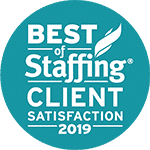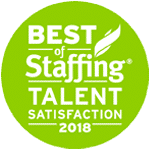Succession planning and talent pipelines are both important parts of the recruiting process for many organizations. Many people confuse building an internal talent pipeline with succession planning, though. What is the difference between the two? How can succession planning vs. talent pipelines impact your business?
What are Talent Pipelines?
When you build a talent pipeline, you are building relationships with people in your industry. While you may not be ready to hire any of these people right now, they are people that could be good additions to the team in the future. A successful talent pipeline will put you in a position to continue growing in the industry in a meaningful way.
There are a number of benefits to constructing a talent pipeline for your business. One of the main perks is being able to engage with passive candidates. For example, you may meet a business professional at a networking event. You can save their contact information and remain in touch. When a position comes up they might be a good fit for, you can re-approach. It will also likely save you a lot of money in recruiting costs. You won’t have to pay to advertise open positions any longer. All of your growth will occur internally through your pipeline.
What is Succession Planning?
Succession planning, on the other hand, focuses on bringing in junior talent to the business rather than seasoned professionals. Over time, they are trained to become the replacement for higher-ups when they reach retirement or otherwise leave the company. Much of succession planning includes cross-training and being able to identify talent that will pick things up quickly.
If you are considering using succession planning to manage your workforce, there are a number of other important factors to think about. For instance, if an executive in your company plans to leave, what is their contractual obligation to the organization? Some higher-level employees are required to give you one year or more notice before leaving. This gives you the benefit of being able to train your higher-ups firsthand. It can also help encourage people in your company to seek out career development opportunities.
Succession Planning vs. Talent Pipelines: The Difference
So, both succession planning and talent pipelining provide companies with candidates in some way. However, they are vastly different in the approach. Succession planning focuses on hiring someone with the intent to train them and further develop their industry knowledge to continue working with the company. This is a great way to build strong relationships with employees and it will also provide you with staff that truly understands your company from the inside out.
On the other hand, talent pipelining focuses on nourishing relationships with people in the industry before they are employed with you. Creating a talent pipeline gives you access to candidates at all times. When your company is expanding, you can tap into the pipeline to find someone with the necessary skills to grow. If there is an immediate staffing need, the pipeline is there to provide you with a candidate.
GoSource is Here to Help You
Working with a staffing agency like GoSource can help you decide what kind of recruiting process is best for your company. We can help you identify talent on your staff that would be a good fit for succession planning. Additionally, our recruiting professionals can help you build an impressive talent pipeline if needed. Contact us to learn more about our services and how we can assist you.






